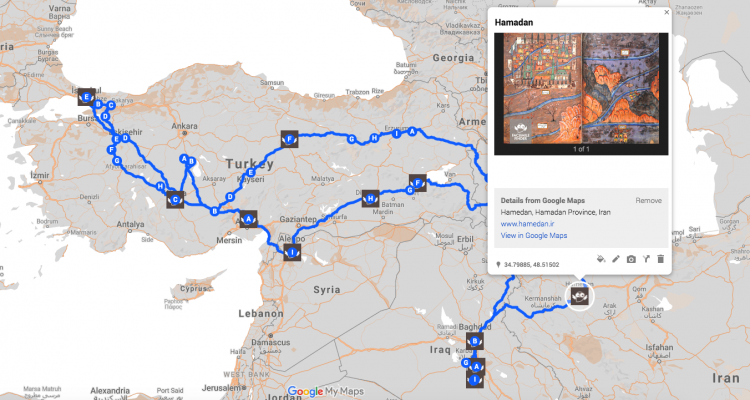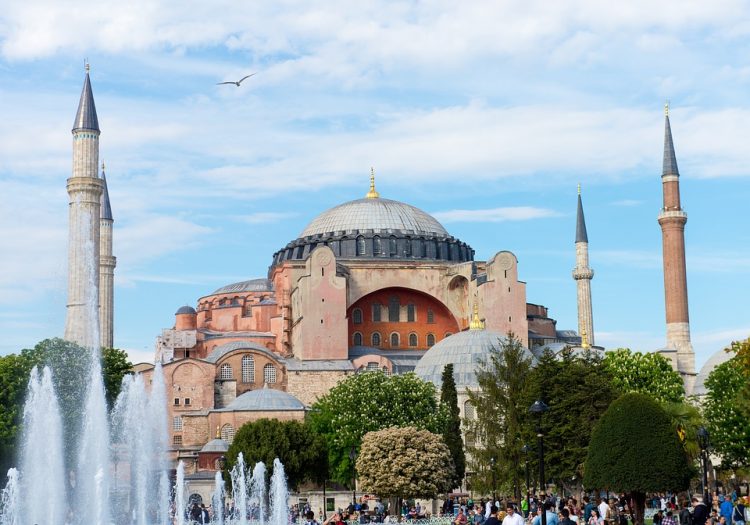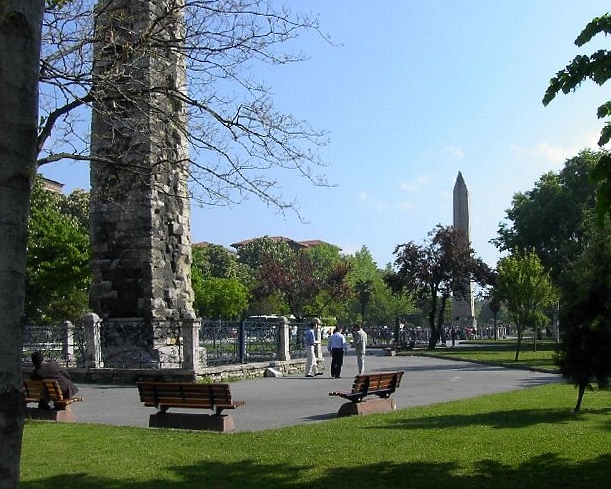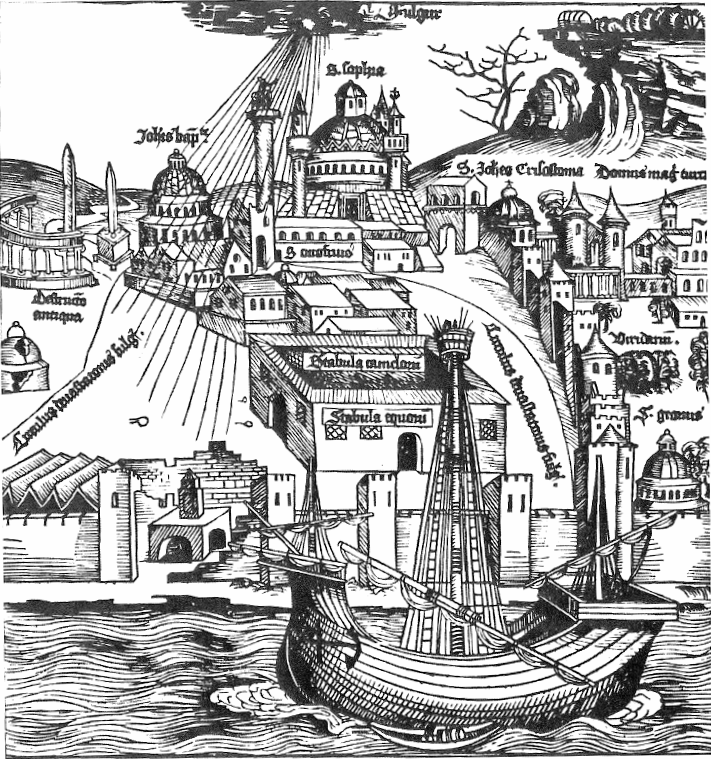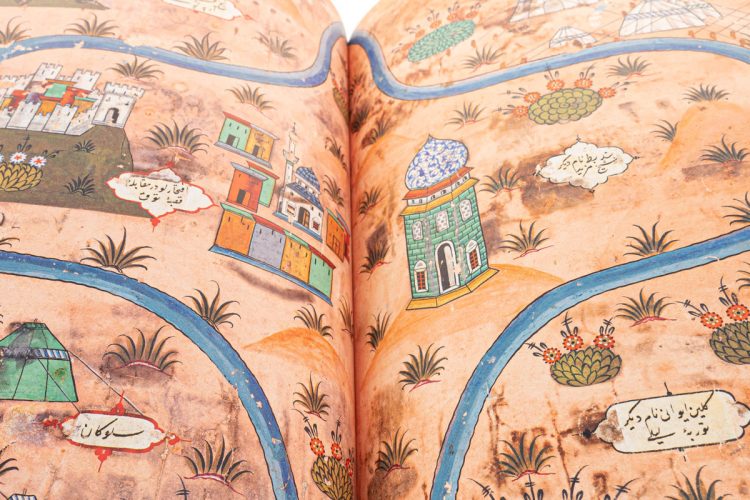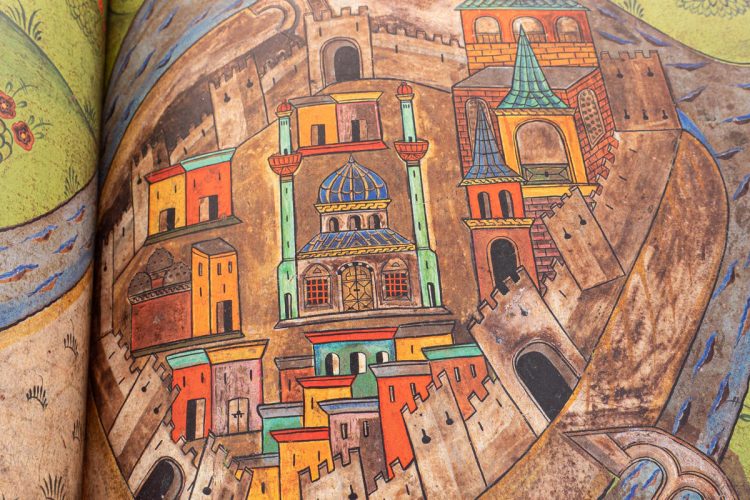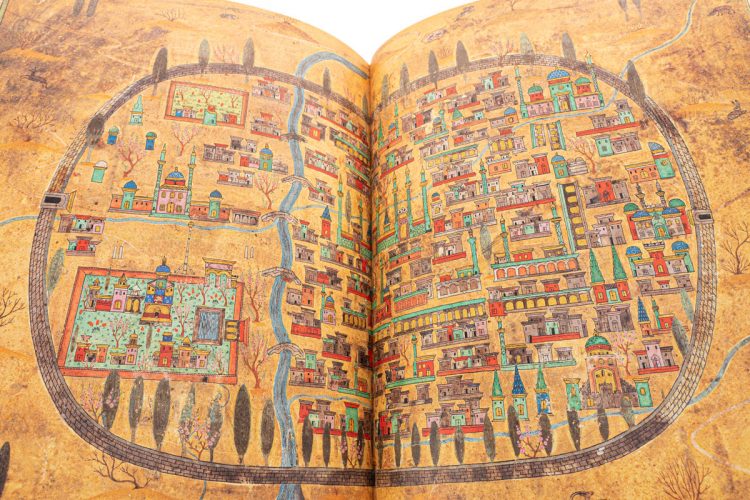If you ever wondered what Constantinople looked like in the 16th century, check out this Ottoman-era manuscript, as kaleidoscopic as the city itself. You can even compare past and present with our interactive map!
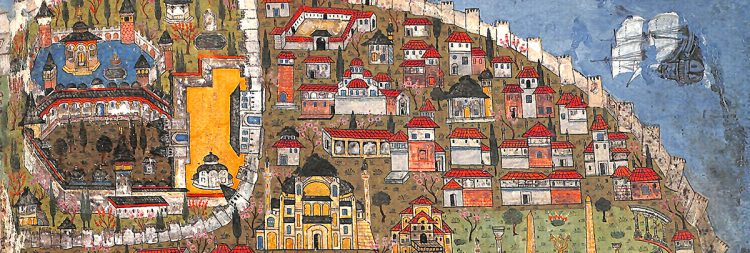
The Menazilname, a 1537 account of Sultan the Magnificent’s Iraqi campaign, is a splendid example of manuscript art from the Ottoman era. Its historical narrative in Turkish language and 107 elaborate miniature paintings by Bosniak historian Matrakçı Nasuh portray dozens of cities with the utmost accuracy. To find out more, scroll down to the end of the page!
And now, put on your walking shoes and let’s start our tour!
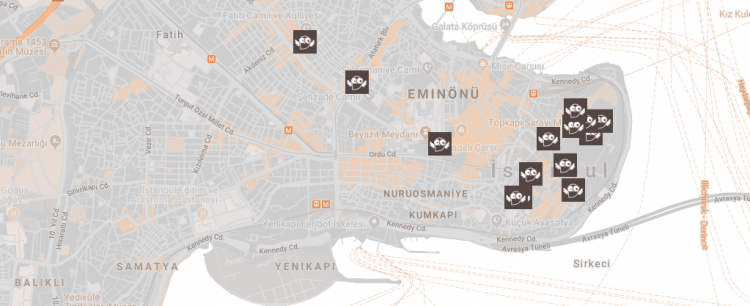
Don’t be afraid to get lost: our interactive map will guide you to the main sights in 16th-century Constantinople.
Hagia Sophia
The first monument that catches our eye in the intricate web of streets is Hagia Sophia, an ochre building between Topkapı Palace and the Hippodrome. But the mosque Matrakçı Nasuh was familiar with is different from the one tourists now admire in bustling Istanbul.
Sultan Selim II (1566-1574) built two large minarets in the western area, added a sultan’s lodge and a mausoleum, and had a golden crescent installed on the top of the dome. In the 18th century, Sultan Mahmud I transformed the area into a social complex by ordering the construction of a Koranic school (medrese), a soup kitchen (Imaret), a library, and a fountain for ritual ceremonies (Şadirvan).
The magnificent building, converted into a mosque in 1453, underwent major restoration between 1847 and 1849 and was transformed into a museum in 1935 by the founder of the Republic of Turkey, Mustafa Kemal Atatürk.
And can you see the red-brick building close to Hagia Sophia? It is Güngörmez Church, a monument which has not survived until today.
Topkapı Palace
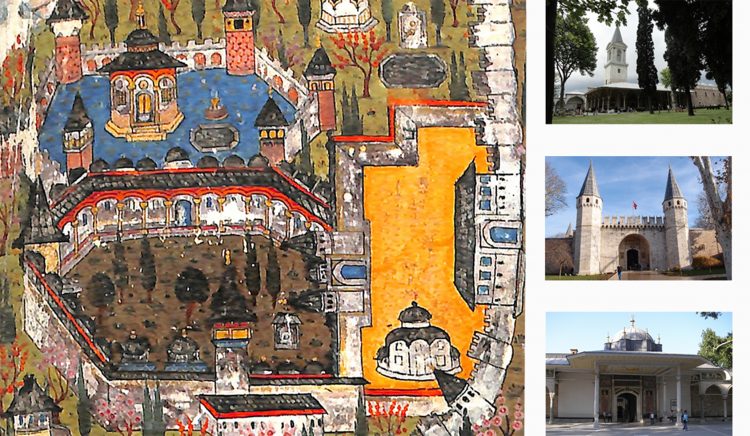
Close to Hagia Sophia is Topkapı Palace, which Nasuh took great care in representing. On the very right is the Imperial Gate (Bâb-i Hümâyûn), whose windows and door arch are blue to show that they were kept open during Suleiman the Magnificent‘s reign: from dawn to dusk, anyone could enter this court on horseback – the gate was opened for morning prayer and closed at evening prayer.
The Gate of Salutation (Bâbüsselâm) was depicted by Nasuh almost on the same axis as the Imperial Gate. And even though the third court of Topkapı Palace is on the axis of the two other courts, Nasuh represented it on the side and colored it in blue, possibly to underline its importance. The köşk in the middle of the court was built for Sultan Bayezid I and later demolished. Presumably, the seven towers surrounding the court portray the original seven-tower structure of Topkapı Palace. Below the köşk is the Gate of Felicity (Babü’s-Saade).
In the 16th century, the Tower of Justice was enclosed by red-colored lattices. The narrow building just below it is the Harem, which has not been depicted in detail in later miniature paintings due to its private character.
Hippodrome
On the edge of the land, near the Bosphorus, is the Hippodrome with its eight columns, among which are the Stone Column, the Serpent Column, and the Egyptian Obelisk.
Below the Hippodrome is İbrahim Pasha Palace, which Nasuh depicted from various angles, and even changed the position of some elements: the council hall and raised platform are represented on the right side of the palace, although they are located on the left.
This allowed the artist to show all the parts he thought most important – if he had portrayed the palace from a single angle, he would not have been able to achieve this result. The roof of the İbrahim Pasha Palace, which was originally painted silver to underline its importance, has turned black due to oxidation.
Believe it or not, we found another illustration of Constantinople in one of our manuscripts! It belongs to the Nuremberg Chronicles, a 596-page long incunabulum by German humanist Hartmann Schledel which tells world history from the Creation until the discovery of America.
Published in 1493, the volume depicts Güngörmez Church – a building also portrayed by Matrakçı Nasuh, but which has not survived until today – struck by lightning in 1490, with a partial view of Topkapi Palace, the Hippodrome, and Hagia Sophia. Now that you have become familiar with Istanbul’s history, can you recognize all of them?
The Menazilname: a vibrant journey through time and space
If we consider Sultan Suleiman’s Iraqi campaign, Istanbul is only the departure point. And if we look at the Menazilname manuscript, everything you read in this post only refers to two folios! (8r. and 9v.)
The Ottoman troops’ journey to Western Asia is long, and there is a lot more to see: so many deserts to cross, so many different architectural styles to admire, and so many cities to discover! (Baghdad, Tabriz, and Aleppo, just to name a few).
